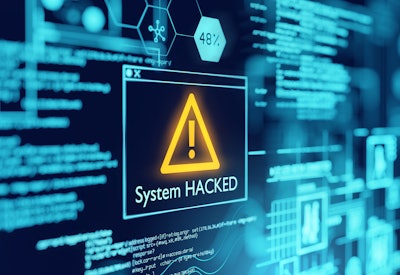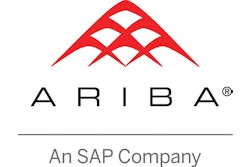
Illegal trade in counterfeits is a substantial and growing threat to the competitiveness of legitimate industry. It deprives companies of revenue and profit, undermines brand value, puts consumers at risk and results in lost jobs. In the auto industry alone, the Federal Trade Commission estimates that an additional 250,000 American workers would be needed if counterfeit parts were eliminated.
The auto parts industry has turned up such a variety of fake parts being sold in the United States that entire cars could be built. With counterfeit auto parts, the concern goes beyond monetary losses. Fake parts are cheaper for a reason: counterfeiters cut corners and use poor quality materials, and the consumer pays the price in the end. Elsewhere, the pharmaceutical industry and the food industry also face real and present dangers, beyond direct financial losses, from counterfeiting and diversion.
As a key leader in your company's supply and demand chain management processes, how are you and your company seeking to improve product and supply chain security? Effective supply and demand chain management is often measured by having the "right product at the right place at the right time." In conventional terms, clear market and demand knowledge drives commercial success in meeting customers' needs.
Either the right product is at the right place at the right time, or a potential sale or manufacturing window is lost. Companies continue to invest in their integrated supply chain functions to improve sales and operations planning (S&OP) capabilities to create strategic advantages while improving cash flows and working capital. However, from a secure supply chain perspective, what is your company doing to ensure that the "right product" is actually delivered to the right place at the right time?
Increasing Complexity, Growing Exposure
Firstly, what exactly does "right product" mean? In the conventional context, the right product is a demand-driven concept that can be loosely defined as a product with features and functions that meet a customer's needs. Operationally though, the definition of the "right product" should also include that 1) the product is genuine and 2) the product was delivered through its authorized distribution channel. In other words, the right product is not a counterfeit and has not been diverted. In this context, supply and demand chain management processes extend beyond S&OP and operational metrics to include ensuring the authenticity of products and product handoffs to make certain that customers really receive that for which they are paying.
No one can argue with the fact that our economy has become progressively more globalized. As a result, our supply chains have become long, complex and, at the same time, quite porous. With increasing complexity, supply chain managers have an increasingly difficult role to ensure legitimate product reaches the intended consumer and illegitimate product stays out of the supply chain. In fact, most supply chains are so complex today that few business people know the actual path of their product from manufacturer to customer. It is often difficult to answer questions like: How many handoffs are there? Who is the actual manufacturer? Who are the carriers? Who are the brokers? Who operates the warehouses? Where are the warehouses? When the answers to these questions are not clear, supply chains are highly vulnerable to being compromised with counterfeits and "grey market" activity.
Securing products and supply chains is a multi-pronged effort comprised of several key success factors. These factors include cross-functional teams, clearly defined metrics, authentication technologies, enforcement protocols, program governance and executive sponsorship. Anti-counterfeit and anti-diversion technologies can and should be an integral part of a comprehensive program as they are most effective when utilized in the context of an overarching business goal. Supply chain executives have a responsibility to their business partners to work collectively and collaboratively to ensure tools and processes are in place that supports the delivery of the "right product."
Anti-counterfeiting Tools: Making Sure the Product Is Genuine
The counterfeiter has no tie to a given product, a given brand or even a given industry. He is opportunistic. He moves from cigarettes to drugs to cell phones with amazing speed and flexibility. Brand owners must make it more attractive for the counterfeiter to move on to another brand than to counterfeit theirs. Remember, the counterfeiter is in business to make money as quickly and as easily as possible. A comprehensive and effective solution approach makes it difficult and expensive for the counterfeiter to effectively target a brand.
Authentication technologies place their own mark or physical "signature" on the product or package and are a key tool in combating counterfeiters. The proper use of authentication technologies can assist in securing products, and companies typically deploy these technologies as layered features to raise the time and investment risk for the counterfeiter. These layers serve different purposes in protecting product and brand integrity.
The first layer of security most commonly utilized is an overt technology like a hologram or color-shifting ink. These features are visible to the naked eye and give supply chain partners and consumers confidence in the authenticity of the goods they are selling and buying. They also send a clear signal to counterfeiters that the manufacturer is taking measures to secure its brand and products. However, since overt features can be seen, they can also be removed, adulterated or mimicked. Most companies that employ multiple layers of security technologies plan for no more than six months of time before an overt layer is compromised.
Click here to hear more about authentication and visibility in the supply chain:
Covert security solutions, like luminescent inks, magnetic threads, or physical or chemical "taggants," are hence layered within or along with the overt features to provide a means of authenticating the products or packaging, or further determining if an overt feature has been compromised. While often used in concert with other features, covert features are also valuable as standalone security measures when a brand owner does not want to signal to the public or supply chain participants that action has been taken.
Covert protective measures are not visible to the eye and require a specifically designed detector to validate the presence of the genuine feature. The covert mark and detector provide a secure "lock and key system" that can unambiguously determine the authenticity of the product or packaging it is meant to protect.
Manufacturers or investigators can use these concealed features to discern genuine product from counterfeits. Covert solutions enable definitive decision making in the field, saving the time and costs associated with investigations and seizures during the enforcement stages of anti-counterfeiting programs. They can also be used to validate claims for rebates, warranties and returns as products or documentation are returned and authenticated by a brand owner.
Covert protective measures are more difficult for counterfeiters to identify and reverse engineer, especially if they are not in possession of the detector. However, companies should still plan to vary these features over time to ensure they are always one step ahead of the counterfeiter.
Anti-diversion Tools: Ensuring Delivery through Authorized Channels
When given the opportunity, products migrate from small, lower-priced geographies to larger, more profitable geographies and channels. Clearly structured channel partner agreements, disciplined pricing practices and differentiated product packaging for each major geography or market are all fundamental good practices to maintain desired fences between markets and channels. However, many good supply chains are still vulnerable to diversion issues. Diversion is of particular concern because grey market goods are often "salted" with counterfeits.
The best tool to assist in monitoring the proper flow of product is track-and-trace technology. The unique identification of products and/or packaging, and the tracking and storing of those unique identifiers along with transactional shipping data, are the cornerstones of track-and-trace. This identification can be based on a standard such as the electronic product code (EPC), or it can be proprietary to the brand owner or security provider. Bar code or radio frequency identification (RFID) technologies are the most common marking methodologies.
These marking methodologies are often overt, however, in that their presence is evident to the naked eye. Unlike counterfeiters, who try to mimic security features, diverters typically try to remove serialization information to protect the source of their supply. Covert serialization, or the application of unique identifiers in a hidden format (typically through invisible inks), is an alternate marking methodology that can be employed in combination with an overt, human readable code. Because diverters cannot see the covert mark, this unique identifier can survive in the unauthorized supply chain while the human readable code may be compromised. During investigation, the covert unique identifier can additionally be used by the manufacturer or investigator to ascertain where and when the product left the authorized distribution channel. Additional benefits of covert serialization are that it doesn't interfere with the overall design of the package and it may provide a combined benefit of authentication and serialization.
Once the product has been uniquely identified, associations or linkages can be made to cartons and pallets, and to customers/customer shipments. These hierarchies or linkages can be maintained throughout the product's supply chain, enabling enterprises to track a product's movements through the supply chain and to retrace its movements if necessary. When a sales or enforcement person checks a product in the field, the track-and-trace database can report on the product's history from manufacture, through distribution, to the intended customer. This information can be especially rewarding to companies offering rebates or warranties, enabling them to match the rebate or warranty to the unique identifier, reducing the risk of fraud.
Key Considerations: Taking the First Steps
Companies can avail themselves of a wide variety of technologies, products and services to help in their product security efforts. But the choice of which technology to adopt need not be difficult. When selecting among the various product security devices, keep the following in mind.
Authentication technologies should:
- Be integral to the overall anti-counterfeiting solution
- Enable definitive decision making in the field as to whether a product is genuine or counterfeit
- Be implementable in a minimally invasive way into operations
- Be difficult and expensive to copy or reverse engineer
- Not detract from brand images or art
When selecting suppliers for these security features, ensure the vendor:
- Has secure manufacturing facilities and a secure supply chain itself
- Preserves secrecy and confidential information
- Has the necessary support systems
And certainly always remember that securing products and supply chains is a multi-pronged effort, of which authentication technologies are integral to, but only one component of, an effective and comprehensive program. Supply chain executives, in conjunction with their business partners, should work collectively and collaboratively with sets of tools and processes to advance their efforts in improving the security of their products and product delivery. A secure supply chain delivers the "right product" — a genuine and un-diverted product — at the right place and the right time, and makes certain that equal care is given to ensure the safety and security of that product when it is outside the company's direct control as it receives within a company's own walls.













